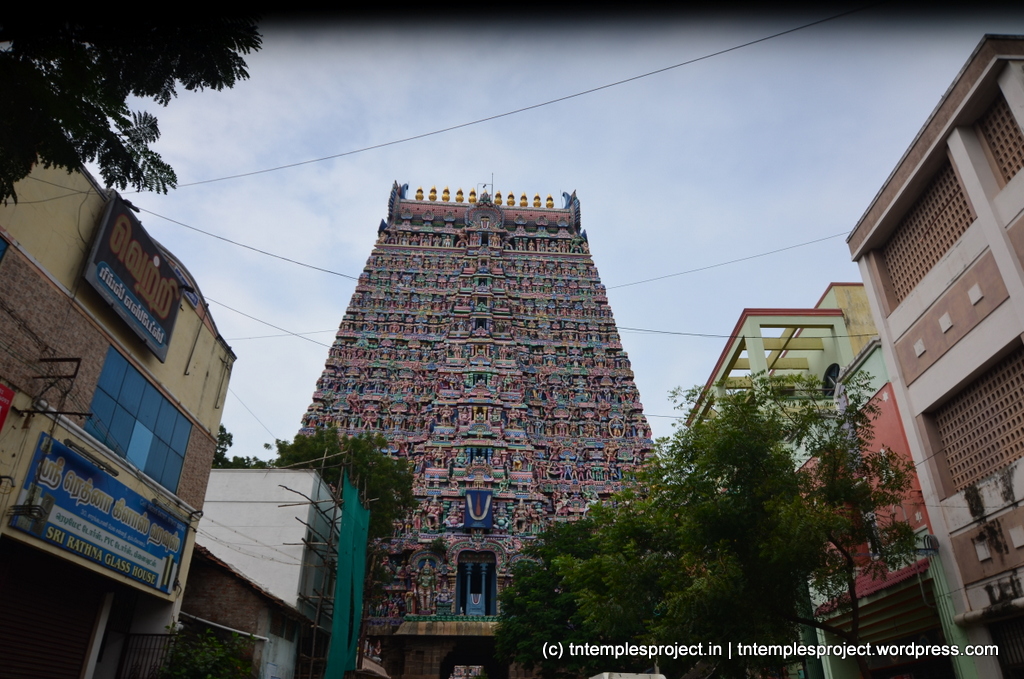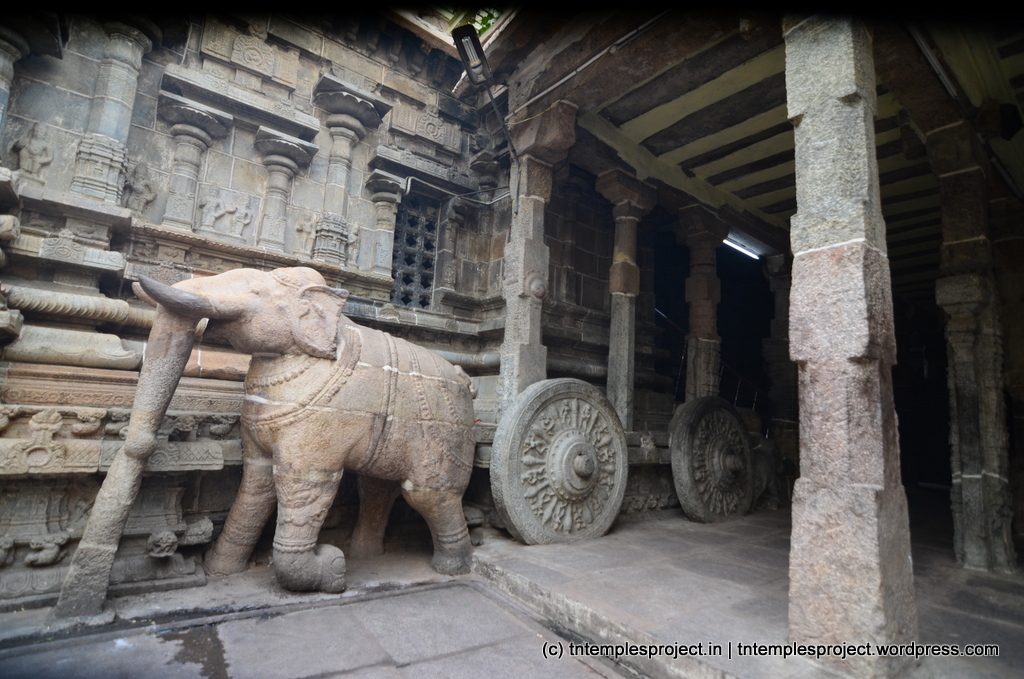Basic information about the temple
| Moolavar: | Sarngapani | Ambal / Thayar: | Komalavalli Thayar |
| Deity: | Perumal | Historical name: | Tirukudanthai |
| Vriksham: | Teertham: | Heme Pushkarini, Potramarai Teertham | |
| Agamam: | Age (years): | ||
| Timing: | 6 to 12 & 4 to 9 | Parikaram: | |
| Temple group: | Divya Desam | – | |
| Sung by: | Temple set: | ||
| Navagraham: | Nakshatram: | ||
| City / town: | Kumbakonam | District: | Thanjavur |
| Maps from (click): | Current location | Kumbakonam (2 km) | Mayiladuthurai (39 km) |
| Thanjavur (41 km) | Tiruvarur (42 km) |
Location
The temple is located in the heart of Kumbakonam, the temple town.
Sthala puranam and temple information
Sarngapani temple is a Divya Desam temple, considered third in the line of temples starting with Srirangam and Tirupati. The temple is revered in Divya Prabandham, the 7th–9th century Vaishnava canon, by Andal, Periyazhvar, Boothathazhvar, Tirumazhisaiazhvar, Peyazhvar, Nammazhvar and Tirumangaiazhvar. In old literary texts, this place is mentioned as Kalyanapuram or Sarngapattinam.
This temple is a Pancha Ranga Kshetram – 5 important temples where Lord Vishnu is worshipped as Ranganathar. These temples are Adi Rangar at Srirangapatnam, Ranganathar at Srirangam, Appalarangan (or Appakudathan) at Koviladi, Parimala Ranganathar at Indalur, and Trivikrama Perumal at Sirkazhi (referred to as Vatarangam). In some places, the Sarngapani temple at Kumbakonam is mentioned in place of Sirkazhi.
This temple is also one of the Vaishnava Navagraha Sthalams, this with for Suryan.

After the incident of sage Brighu kicking Lord Vishnu on the chest, Vishnu took the form of Srinivasan and married Padmavati Thayar at Tirupati. Hearing about this through Narada, Lakshmi was annoyed, but sage Brighu pleaded with Her here, and as a result of his penance, Lakshmi was born as sage Brighu’s child in Kudanthai (Kumbakonam). (Another slightly different version says that Lakshmi was born as Komalavalli in a lotus flower in the temple’s Hema Pushkarini Teertham, and that sage Hema Maharishi found her and brought her up). Eventually she married Vishnu, who came here in a chariot and wielding the Sarngam bow. This explains the temple being shaped as a chariot.
Lakshmi promised Vishnu that would never leave him again (Komalavalli Thayar has never been taken out of the temple, and so is worshipped as Padi Thaandaa Pathini – the wife who never crosses the threshold of the house).
A devotee named Lakshmi Narayana Swami spent his entire time dedicated to the service of the temple, and never married. When his neighbours reminded him about who would perform the last rites for him, he became worried and surrendered himself to Aravamudhan, who assured him that things would be taken care of. When Lakshmi Narayana Swami attained mukti, Vishnu himself is said to have come to earth as a brahmin boy to perform the last rites.
When Vishnu came to marry Lakshmi here, he playfully hid himself under the earth, which worried and saddened Lakshmi. After a while, he reappeared and pacified her. Hence in this temple, there is a Patala Srinivasan and Mettu Srinivasan shrine. (Some legends say the Lord hid himself to avoid the wrath of Lakshmi, and hence is called Patala Srinivasan.)
When Tirumazhisaiazhvar came here to pray, he asked the Lord if the latter was lying down because he was tired. In response, Perumal sat up, and the moolavar vigraham (idol) depicts this act of getting up, called Utthaana Sayanam.
As this is the birthplace of Lakshmi, she gets the preference in the pooja here and devotees can pray to the Lord only after praying to her. Even the go-puja (puja to the cow) is done in front of Thayar’s sannidhi as against the normal practice of in front of Perumal’s sannidhi.
As Lord Vishnu himself came here as a bridegroom, this temple has no separate Swargavasal.
Legend has it that Nathamuni (who compiled Divya Prabandham) found only the first ten verses, sung on Aravamudhan (another name for Lord Vishnu), out of 4000. Nammazhvar recited the remaining 3990 verses while he was in deep meditation and Nathamuni compiled them.
As is the case with a few other temples, this temple’s sanctum sanctorum has two entrances in the north and south – for use during Uttarayanam and Dakshinayanam respectively (this is similar to Tiruvellarai Pundarikaksha Perumal temple).
The temple is sculpted as a chariot, complete with intricately sculpted wheels!
This is the largest Perumal temple in Kumbakonam, and has the tallest gopuram as well. Except the Portamarai tank, all the other shrines are within the precincts of the temple complex. The Portamarai tank is closely connected to the story of the origin of Kumbakonam. This is also one of five Perumal temples connected with the Mahamaham festival (the others being Chakrapani temple, Ramaswamy temple, Rajagopalaswamy temple and the Varaha Perumal temple).
Other information for your visit
Contact
Gallery































